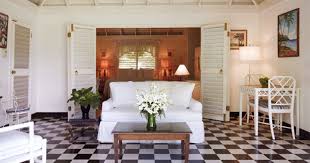Any homeowner will be familiar with the need to update material surfaces within the home. In some cases, the project is purely a matter of cosmetic choice. However, many surfaces within the home, especially the flooring of high-traffic areas, become damaged over time and require an update. Criteria for replacing this material can range from the aesthetic to the practical, but many home owners are also considering materials that are eco-friendly, as well as durable and attractive. That can narrow the options to a manageable selection—especially if transportation and disposal impacts are factored into the final assessment.

In recent years, amazing things have been done with concrete. It’s no longer strictly confined to outdoor or garage applications. While the sleek modern architecture scene has long appreciated concrete for its malleable, versatile characteristics as an indoor material, the word is out. Below, this article will explore some of the advancements and features that make concrete an excellent, cost-effective, and attractive material for home and business renovations.
Considering Tile?
Tile has always offered a variety of choices for the homeowner or business proprietor to customize their interior design. It can be manufactured from a number of different materials—from slate, marble, and other stone to composite materials. It’s been a mainstay in many civilizations for thousands of years. Terracotta and other baked ceramic materials, were main components in the beautiful mosaics found in the buried city of Pompeii.
Tile can be applied to walls or floors. Any room in the home or business can be outfitted with tile—from bathing spaces and kitchen backsplashes to hallways that see daily commuter traffic. But even ceramic, a manmade material, lacks the ultimate utility and versatile quality of concrete. Read on to discover just what concrete has to offer and how it can benefit both the individual homeowner and the business owner seeking a design with flair.
Benefits and Considerations When Using Concrete
Because concrete is man made, it can also be a custom-mixed material. That means that it’s not a one-trick pony. Instead, concrete artisans can mix a batch of material that meets both color and design needs of the individual. Tiles can be made to order in a variety of finishes, colors, and degrees of plasticity. The last consideration is one that offers a solution for individuals who need a beautiful material that will withstand high traffic or function as transitional flooring for mixed-use spaces. Plasticity refers to the level of friability or brittleness of the tile material. Concrete can be fabricated so that it not only absorbs less water, but also provides a resilient customized floor or surface of the client’s choice.
For those interested in exploring the options that concrete has to offer, it’s important that they find a reliable vendor they can visit in person. While concrete mixes can be made to order, colors viewed via a computer can sometimes be misleading. Artisans advise that color chips be procured for comparison purposes in any home or business, and of course, its always wise to order a bit extra to compensate for inadvertent damage during installation.
